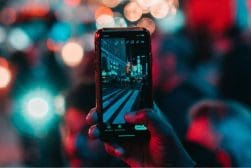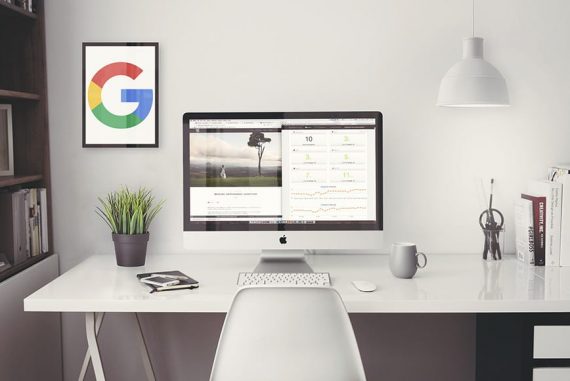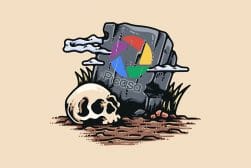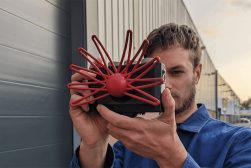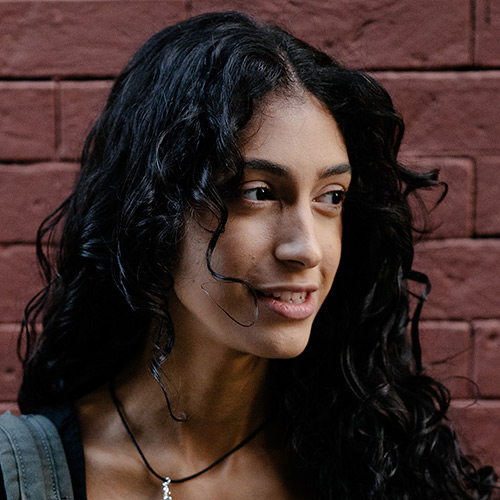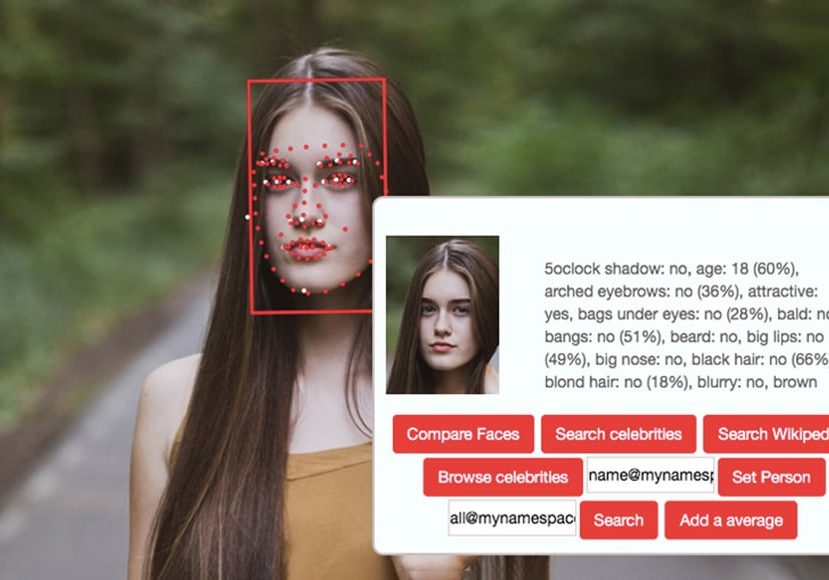
How to Use Facial Recognition Search
Being able to find a photo of someone using facial recognition search or reverse image search technology can be useful. Here are 4 ways to do it for free.
Learn | By Usnea Lebendig | Last Updated: March 4, 2024
Facial recognition search technology has come a long way in recent years. Combined with facial identification technology, face recognition technology not only allows software to recognize when a face occurs in an image, but to also identify other images with the same face or even confirm an identity in real-time.
The applications for this kind of tech are vast – from checking to see if anyone is using an image illegally to unlocking your phone.
For photographers, it does everything from in-camera face detection to instantly pulling up every image in your library pertaining to a particular person.
If you’re an event or portrait photographer, automatic face tagging can save you incredible amounts of time. For hobbyists who love family photos, face matching technology can make finding photos of loved ones infinitely easier.
When used in a reverse image search, face recognition can also be used to see if anyone has taken your images without permission, violating copyright.
Let’s take a look at how it’s done and how best to use it.
How is Face Recognition Done?
There are two different types of facial recognition – fiducial recognition and pixel detection.
In fiducial recognition, the software measures the dimensions of different facial features. Examples include the distance between the eyes, the width of the nose, the length of the jawline, or even the shape of the cheekbones.
Pixel detection analyzes the pixels in an image and compares them to a database of appearance generalizations (i.e. age, sex, etc.).
Both methods collect biometric data from a person’s face and facial expression, then face recognition online free tools use this data to identify and/or verify the identity of the person in the photo.
All the face finder online are split between these two.
Paired with artificial intelligence and machine learning, face recognition technology has become more and more accurate, and now can even work with incredible accuracy in real-time – at least in certain demographics.
What is a Reverse Image Search?
A reverse face search, or a face recognition search, is the process of uploading a photo into a search engine, like a face search engine, to find similar images. This can be anything from people to car parts to plant IDs.
The search results will not only show similar images but also websites that have that image or ones similar to it.
At its most creative, reverse image search turns into a sort of Shazam for images, except that instead of songs you’ll get everything from Wikipedia articles to links to relevant websites to prices and places to buy an item.
In terms of facial recognition, reverse image search was originally used for entertainment purposes, like finding the name of a celebrity you may have forgotten.
These days, however, there are all sorts of applications – everything from discovering fake accounts on social media sites to discovering copyright violations. With tools like face search person by photo, you can even determine how far your face has spread on the internet!
You can even use it to find out how far into the wide reaches of the internet images of your own face have traveled!
How Can you do a Facial Recognition Search?
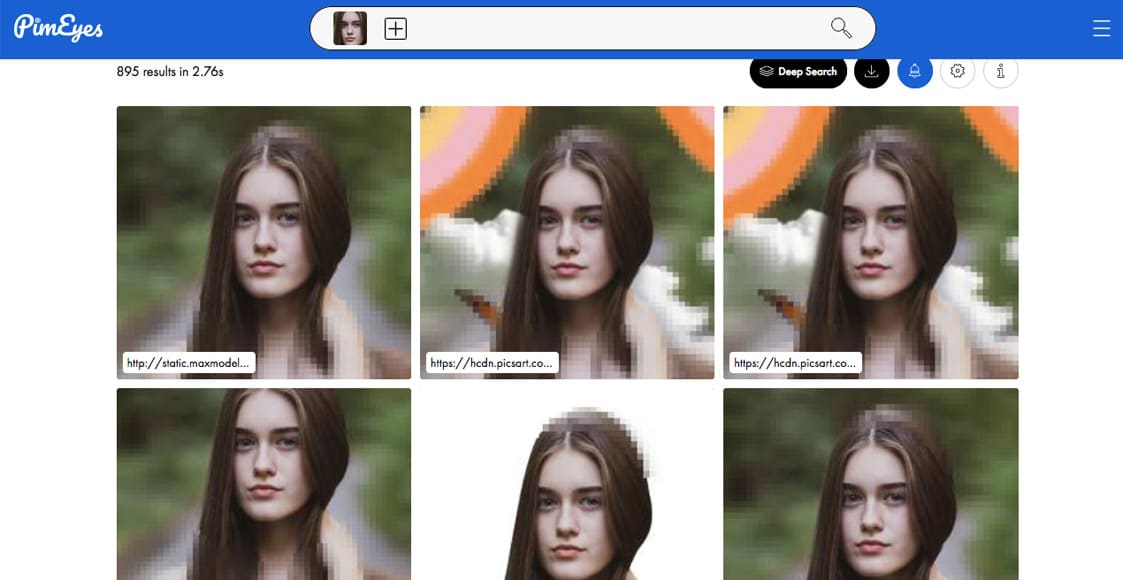
Numerous services offer a free facial recognition search. For a more refined result, though, you’ll probably have to invest a little, depending on how deep into the Internet you want to go.
Here are some popular face finder free options:
PimEyes
Ever asked yourself “Who is this person?” Give this tool a go.
How Much Do You REALLY Know About Photography?! 🤔
Test your photography knowledge with this quick quiz!
See how much you really know about photography...

A newer face recognition online tool, PimEyes searches for similar faces on over 10 million websites. They provide both free and paid versions.
The free option only allows one to see if a certain face is on the Internet. The subscription service allows you to access all of its other services, including Deep Search, generating PDFs, and sending you notifications if your photos come up later.
PimEyes can even help you get your image removed from a site.
One cool thing about the results is that they’re not limited to the photo you uploaded. The service also finds pictures where the background’s been changed, other people have been added, or modifications have been made, like a change in hair color.
Their search results don’t find everything, though. I tried it with a couple of stock photos. On one search, they didn’t find anything. On the other, they found several. For those searching for a Pimeyes alternative or a Pimeyes free alternative, there are other tools available.
Head on over to www.PimEyes.com to learn more.
FAQ:
- Is PimEyes legal?
Yes, PimEyes is legal.
- Does PimEyes keep your photo?
PimEyes saves your photo for 48 hours. After that, it is expunged. It does not store photos or any private data from our users.
- Does PimEyes save your face?
PimEyes does not store any images. It only displays images from source websites.
- Is PimEyes face matching online free?
PimEyes offers a free instant search for face matching. However, you will have to upgrade to a subscription to unlock extra features like being able to find out where matched images came from.
While not entirely a free face search, the features alone make it well worth looking into.
Google Images Search
When one says free face recognition search, this is the first thing that comes to mind.
Probably the most renowned face search engine, Google Images allows you to reverse search Instagram pictures or just about anything, including faces.
Google uses AI face search to make searches quicker and more accurate.
To get started, click the camera icon in the search bar. You can either upload a photo or paste the image URL. Google will then find similar images.
Once your results load, click on the image and then go to Tools to pull up more search options. Under the Type pulldown menu you should see an option for Face. Select that and you’re good to go.
In addition to going to the Google Images search page through a browser, you can also access the service through a number of different mobile apps.
For example, the Image Recognition and Searcher app will reverse image search Google, Yandex, and Bing, among others. (Available for iOS 0nly.)
The web version of Google Images works as a free iPhone facial recognition app if you don’t mind the mobile interface. This is a great alternative to paid services like PimEyes.
Perhaps my favorite mobile reverse search engine app, Google Goggles performs face recognition, but it also accesses information about historical landmarks, let you scan barcodes, scan business cards, translate text, and even solve Sudoku puzzles.
If you use an Android phone, you can also use Google’s face search abilities in Google Photos.
PicTriev
If you’re interested in celebrity comparisons, PicTriev is your go-to. It’s a free face recognition tool with many features.
This face recognition app is a fun way to demonstrate the power of facial recognition technology.
Just make sure whatever photo upload you do is no larger that 200 KB. Best of all, PicTriev is a free online face comparison app with plenty of other features at no cost.
One bonus feature of PicTriev is that it will also let you estimate whether two different photos are the same person.
Betaface
Betaface is similar to PicTriev but goes beyond looking for celebrity faces. Like the search engines above, you either do an image upload or use an image’s URL.
It performs face recognition from photos found either locally or from the internet.
Betaface provides a broader facial recognition online service. You can compare faces, search Wikipedia, or even create a user database for Betaface to explore.
Betaface is an effective face scanner app for when you want to cast a wider net than just celebs!
Beyond these, there are a few other services out there, but the results definitely get a bit murkier. It’s definitely best to try these four first!
There are other free pimeyes alternatives out there, but these four are arguably the best to begin with.
Pros and Cons of Facial Recognition Technology
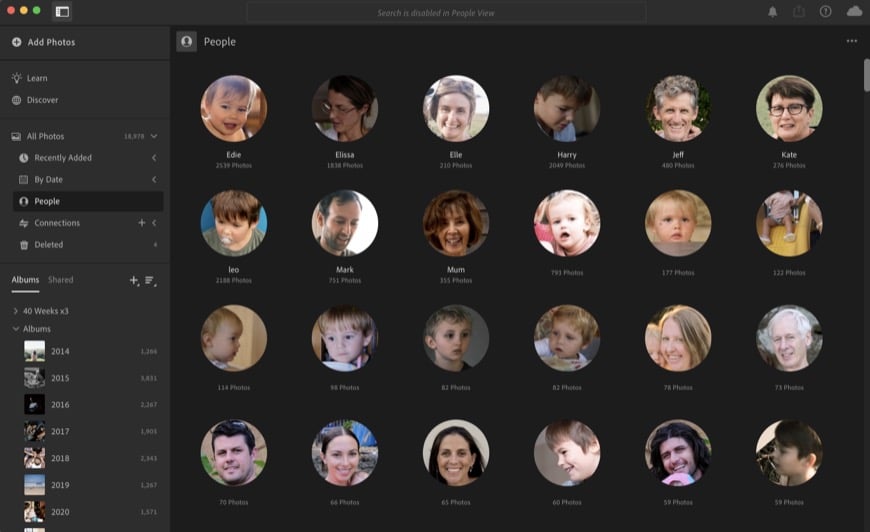
Adobe Sensei powers effective facial recognition within Lightroom.
As mentioned before, face recognition has a number of amazing applications all across the board. It also, however, has a number of downsides.
Pros
Many are already using it to unlock their phones, tag their friends in Facebook posts, or employ a free instant face search in their photo app. It also has a number of benefits for those in the photography business.
For photographers using Adobe Lightroom, you can use Adobe’s excellent face recognition abilities to organize your photos of people in its Library – this function is currently only available in the Cloud-based Lightroom as opposed to the desktop Lightroom Classic app.
Face detection also enables our autofocus to quickly focus on the eyes in a portrait or an event photo, ensuring that they’re in focus.
In post-processing, it also allows AI in photo editors like On1 Photo Raw and Luminar to bring out the best in your portrait images.
Online, you can check to see if anyone is illegally using either your personal photo or those you’ve copyrighted. A free reverse face lookup tool could help photographers catch people using their images without their consent. The face search engine reverse image search is also a great way to see any of your images are uploaded to sites without your consent.
Facial recognition software can also help individuals uncover a potential catfish. (You can actually use a site called Socialcatfish for free Catfish face recognition.) You might also be able to use a face scanner to find a person who has gone missing.
Street photographers can reverse image search for people in their shots if they’d like to transition a shot to a stock photo and get a model consent form.
Cons
While tools like pimeyes.com or pimeyes.con help in certain ways, the broader use of facial recognition technology has concerning downsides.
Most of us don’t really want our personal images recorded and then stored in a government or corporate database for unknown future use. Search by face is, after all, still a hot issue these days.
Law enforcement, for example, can use facial recognition to run anyone in their database through a virtual criminal lineup, which is pretty much the same as treating you as a criminal suspect, but without probable cause.
This issue is so large that a number of US cities have banned the use of real-time (live) facial recognition surveillance by law enforcement – Cambridge, MA and San Francisco, CA among them.
On a more personal level, identity thieves can use a facial recognition search to collect not only personal information but also find images and videos of you to aid them in creating everything from false social media accounts to fake IDs. It can also be used to spread revenge porn.
There have also been reports of some companies, in an effort to design the next, best face finder, snagging thousands of face images off of sites like Flickr, and feeding them into their databases without the consent of the photographers or models.
Another issue with face detection technology is that it’s still far from perfect when a face search includes anyone other than a white male. Using software for free online face ethnicity recognition is even more troubling when considered in tandem with other cons on this list.
A prime example of a con of face recognition is how this software is used on women and people of color. The algorithms being used have far more data on white men than anyone else, creating a definitive bias.
This can be particularly problematic in terms of law enforcement, as a false positive can often lead to an arrest.
Final Words
While there’s definite room for improvement, facial recognition search and reverse image search technology has already come a very long way.
Combined with other technologies – for example, the AI of On1 and Luminar or the fantastic Library module in Lightroom, it’s a fantastic tool for photographers who focus mostly on shooting people.
The reverse image search feature of some search engines is quite likely the way of the future, both for people and for objects and places. (Check out Google Lens for an excellent reverse image search engine for objects and landmarks!)
And privacy? Well, for good or for ill, facial recognition technology is only going to get better. If you’re really worried about how your personal image will be used, it’s best to keep your privacy settings as high as possible when posting or sharing online. Whether you’re using PimEyes free trial, google face search, or any face identifier tool, always be cautious and aware of the implications.
What do you think? Is privacy an issue? Do you use facial recognition technology, either in your photography or elsewhere?

Check out these 8 essential tools to help you succeed as a professional photographer.
Includes limited-time discounts.






